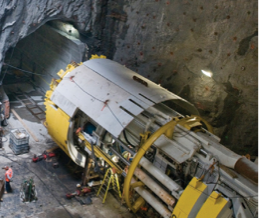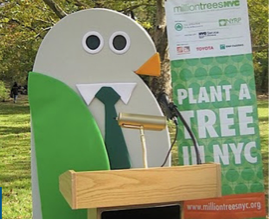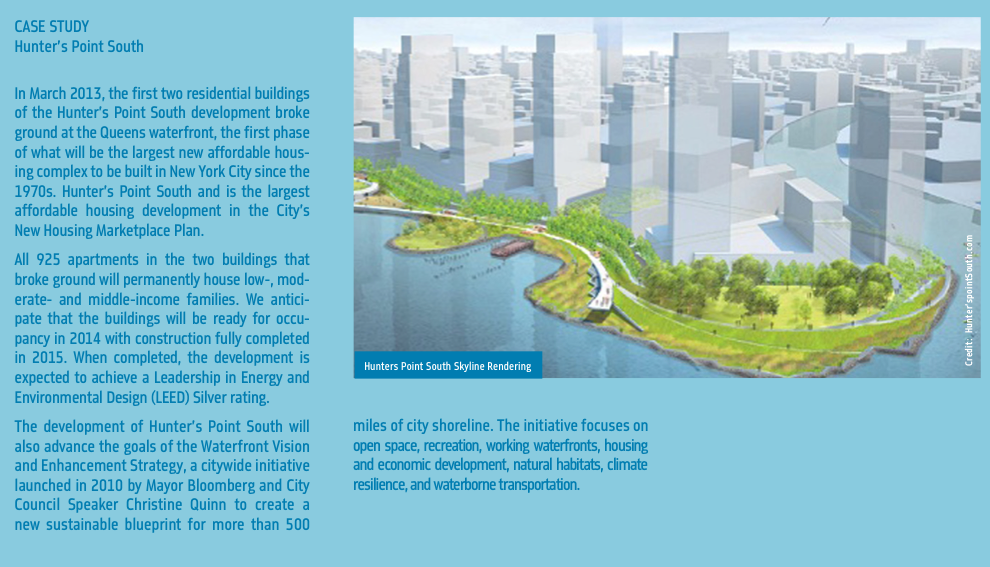THE CITY OF NEW YORK
Introduction
 In 2007, Mayor Michael R. Bloomberg launched PlaNYC, an unprecedented and ambitious agenda to create a greener, greater New York. Since then, we have made remarkable progress toward achieving PlaNYC’s goals, yet numerous opportunities remain to build on PlaNYC’s successes and to ensure the continuity of our efforts. PlaNYC’s 2011 update contained 132 initiatives to improve New York City’s environment, provide more housing and public space, enhance New Yorkers’ quality of life, improve the City’s infrastructure, and increase the city’s resilience to climate change. PlaNYC has changed New York City dramatically since 2007, and we reached major milestones over the last year as we continued to accelerate our efforts.
In 2007, Mayor Michael R. Bloomberg launched PlaNYC, an unprecedented and ambitious agenda to create a greener, greater New York. Since then, we have made remarkable progress toward achieving PlaNYC’s goals, yet numerous opportunities remain to build on PlaNYC’s successes and to ensure the continuity of our efforts. PlaNYC’s 2011 update contained 132 initiatives to improve New York City’s environment, provide more housing and public space, enhance New Yorkers’ quality of life, improve the City’s infrastructure, and increase the city’s resilience to climate change. PlaNYC has changed New York City dramatically since 2007, and we reached major milestones over the last year as we continued to accelerate our efforts.
In the last six years, we have implemented numerous innovative initiatives, including the City’s Greener Greater Buildings Plan, Clean Heat program, climate resilience initiatives, Million Trees program, Green Infrastructure Plan, and more. During this time the city’s annual greenhouse gas (GHG) emissions have dropped 16%—more than halfway to our goal of a 30% reduction by 2030.
In just the last year, we reopened the McCarren Park Pool, developed updated climate impact projections, expanded the Select Bus Service, planted more than 65,000 trees, passed our Zone Green Zoning Text amendment, broke ground on the High Bridge, and implemented many new programs.
The transformative changes brought by PlaNYC are the product of contributions of many, both within and outside of City government. When we launched PlaNYC, we envisioned a City government that integrated sustainability into all of its agencies and their operations—since 2007, many City agencies have institutionalized PlaNYC through the establishment of agency sustainability divisions and the appointment of senior staff members responsible for more than seeing PlaNYC’s initiatives. PlaNYC guides the work of many agencies and is a driving force for many elements of the City’s budget. We now spend 10% of our annual energy budget—approximately $80 million—on funding energy efficiency measures in City government buildings.
We have based PlaNYC’s in itiatives on robust data and analysis, incorporating the best available science and focusing on cost-effective actions—we cannot manage what we do not measure. Partnerships with the city’s real estate, business, not-for-profit sectors, and other levels of government have increased coordination and expedited the achievement of the plan’s goals. PlaNYC has evolved since its inception, and its ongoing success will require continued and additional coordination and innovation—the ability to adapt PlaNYC and its implementation strategies is paramount.
itiatives on robust data and analysis, incorporating the best available science and focusing on cost-effective actions—we cannot manage what we do not measure. Partnerships with the city’s real estate, business, not-for-profit sectors, and other levels of government have increased coordination and expedited the achievement of the plan’s goals. PlaNYC has evolved since its inception, and its ongoing success will require continued and additional coordination and innovation—the ability to adapt PlaNYC and its implementation strategies is paramount.
Since 2007, we have implemented initiatives that have put us on track to achieve all of PlaNYC’s goals. We have created and preserved more than 92,000 units of housing and planted more than 730,000 trees. We have launched the country’s first municipal brownfields cleanup program and an innovative green infrastructure program. We have invested billions of dollars to protect our water supply and have installed 300 miles of bike lanes. We launched the country’s most ambitious suite of policies to reduce energy use in large buildings, passed regulations to phase out highly polluting fuel oil, and expanded our recycling program. We have achieved more than half of our greenhouse gas emissions reduction goal and have taken critical steps to increase our city’s resilience to the effects of climate change. Over just the last year, we have accelerated the implementation of many of PlaNYC’s initiatives, making marked progress toward achieving our goals.
PlaNYC is the world’s standard for municipal sustainability plans and cities throughout the world are emulating our work. While almost all of PlaNYC’s initiatives are now underway and we are well on our way to achieving most of our goals, it is critical to remember that this is a long-term plan, one designed to be implemented overtime as our city’s population grows and we adapt to accommodate more New Yorkers. As such, it is imperative that we continue to revise our plan and learn from our experience over the last six years. We must recognize those efforts that did not achieve success to learn where we could amend our approach. We need to evaluate our initiatives to determine which are still relevant, and what new initiatives might be worth pursuing. Most importantly, PlaNYC must continue to drive innovation and inspire creative solutions to make New York City a greener, greater city as new leadership guides us closer toward our 2030 targets.
Read full report (PDF) her: PlaNYC Progress Report 2013
About PlaNYC
PlaNYC2030
“Released in 2007, PlaNYC was an unprecedented effort undertaken by Mayor Bloomberg to prepare the city for one million more residents, strengthen our economy, combat climate change, and enhance the quality of life for all New Yorkers. The Plan brought together over 25 City agencies to work toward the vision of a greener, greater New York. Since then, we have made significant progress towards our long-term goals.”
Tags: Mayor Bloomberg, planning, PlaNYC, Progress Report 2013, The City Of New York







 RSS Feed
RSS Feed